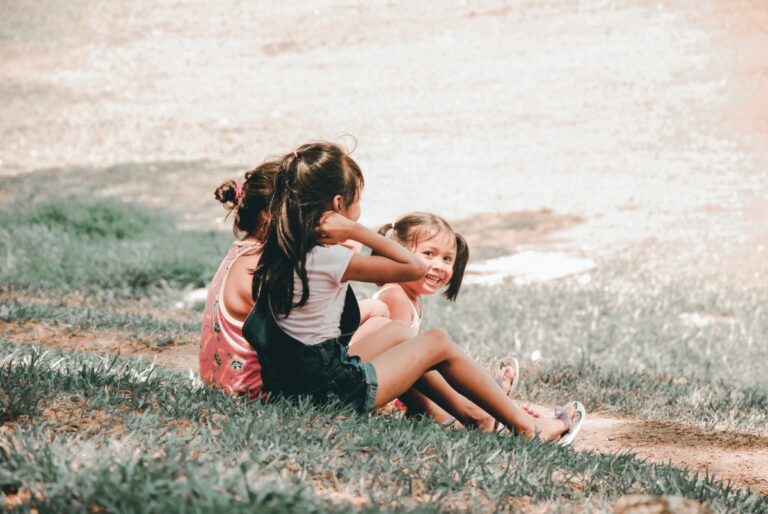As parents, our number one goal in life is to raise good, happy children who grow into good, happy adults. Instilling the virtues of generosity and gratitude is crucial towards this goal. But like most good things, this doesn’t just happen on its own. It takes a conscious effort on the part of parents to nurture these values in children.
Most parents grew-up in a different time. Amazon didn’t drop boxes at the door the same day the items were ordered. We talked to neighbors when we rode our bikes around our safe neighborhoods. We played with kids in cul-de-sacs. The world might be more connected, but it can feel as if we are less connected to the world around us.
Concerns about increasing materialism and self-centeredness can keep parents up at night.
There is a lot of focus on the me’s and I’s. Some of that focus might be amazing for self-care, but it also takes away from a focus on improving the lives of others.
The tragedy of raising kids who are not generous is that it means raising kids who aren’t truly happy. Study after study tells us that generosity breeds happiness. It is in giving that we receive. There is still so much need, but as the world gets bigger, the needs of our close community may feel more out of focus.
Kids are bombarded with the difficult plights of children in far off lands. Donations are solicited for people they will never see with their own eyes. They might feel that the needs of others are distant and outside their own bubbles.
Generosity and Gratitude go hand in hand. They are very much parallel virtues. The more children give, the more they realize how fortunate they truly are.
Table of Contents
- The Importance of Gratitude and Generosity
- Expert Tips for Raising Generous, Gracious and Grateful Children
The Importance of Gratitude and Generosity
Scientists have long studied the links between gratitude, generosity and happiness. They have discovered that a one time thoughtful act of gratitude can significantly increase a person’s happiness, and decrease depressive symptoms.
Studies have shown that generosity makes people happier and can even have significant health benefits. Researchers have even linked generosity and kindness to longer life expectancy.
Happiness, longer lives, better health – these are all things we want for our children. Kids are actually predisposed to altruism. So then the question becomes, how can we foster these gifts in them instead of snuffing them out?
Expert Tips for Raising Generous, Gracious and Grateful Children
We asked renowned Child Psychologist and behavioral expert Dr. Jennifer Gatt to weigh in on how to foster kindness and gratitude in children. Dr. Gatt has her Ph.D. in Educational Psychology and has completed a postdoctoral fellowship in neuropsychology. Her early experience as a school psychologist, and subsequent years working with children and families, give her a unique perspective on how to help kids succeed. She offered these five suggestions.
1. Model Gratitude
Dr. Gatt stresses that the single most important factor in raising kids who are thankful, is to be thankful ourselves. “Kids are always watching their parents and modeling their behavior based on what they see. As early as possible, make it a habit to consciously discuss your blessings with your children. Even when things are difficult, we can find things to be thankful for: a roof over our heads, children tucked in their beds, friendships, jobs, or even our favorite meals.”
“If you model thankfulness for the little things we so often take for granted, your children will understand that these things are not guaranteed.” Dr. Gatt stresses that gratitude often grows with maturity. We take quite a bit for granted in our youth. This isn’t necessarily a bad thing. Children feel safe and stable in their homes and with their families. The older we get, the more we see people robbed of those things we believed would never leave us.
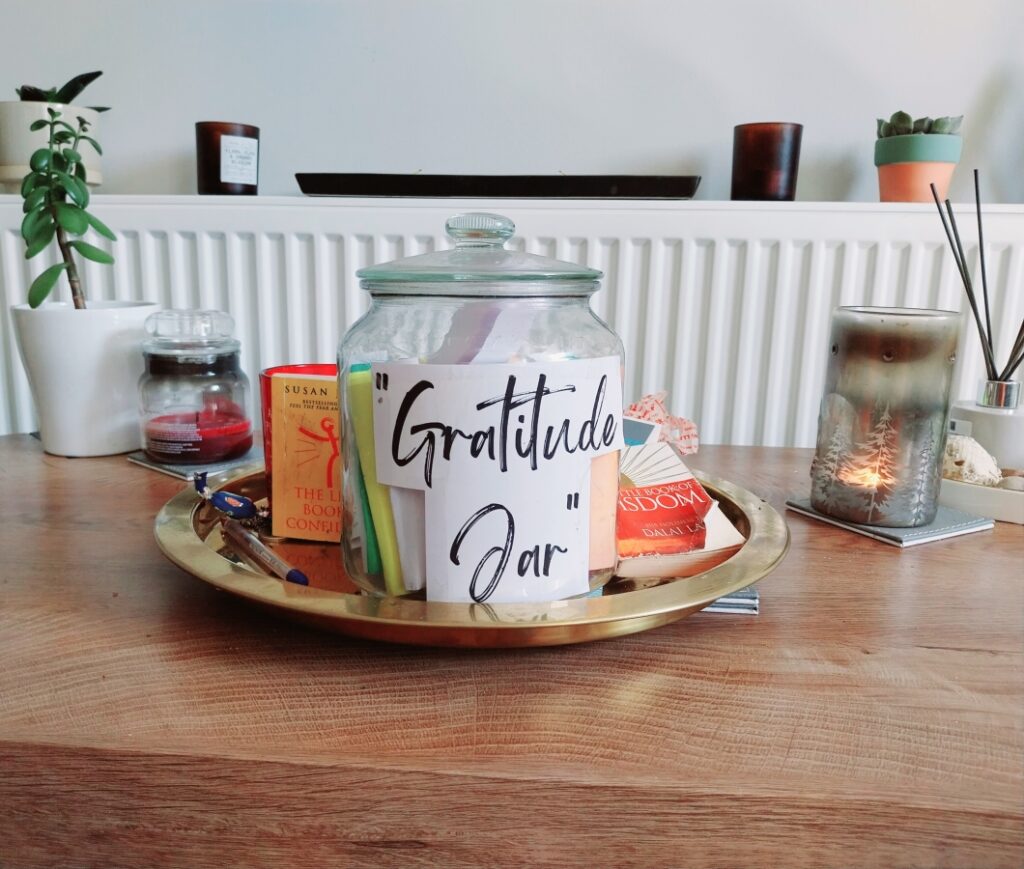
2. Gratitude Jars
Dr. Gatt encourages her clients to use gratitude jars to foster an environment of kindness and grace in their homes. Gratitude jars are easy to make and even easier to fill.
Each child will need a mason jar they can decorate with their name and other fun decor. The jars can go in a central space in the home with slips of paper and writing utensils. Once a week each family member writes something they are grateful for about each member of the family. This can range from “I’m thankful you helped me with my chores” to “thank you for being a good mom.” My 6 year old recently wrote: “Mom helps me boo mi hemwurck.” I’m clearly not helping him enough, but I’ll take the W.
For younger kids, parents or siblings can assist them in writing or drawing a picture so that everyone can participate. At the end of the week the family can sit down together and read the messages. You can decide as a family if you want to read aloud or to yourselves. Teach your children to take in the validation without negating or saying anything other than thank you.
The beauty of gratitude jars is that they encourage children to really think about the people around them. So often we take those closest to us for granted.
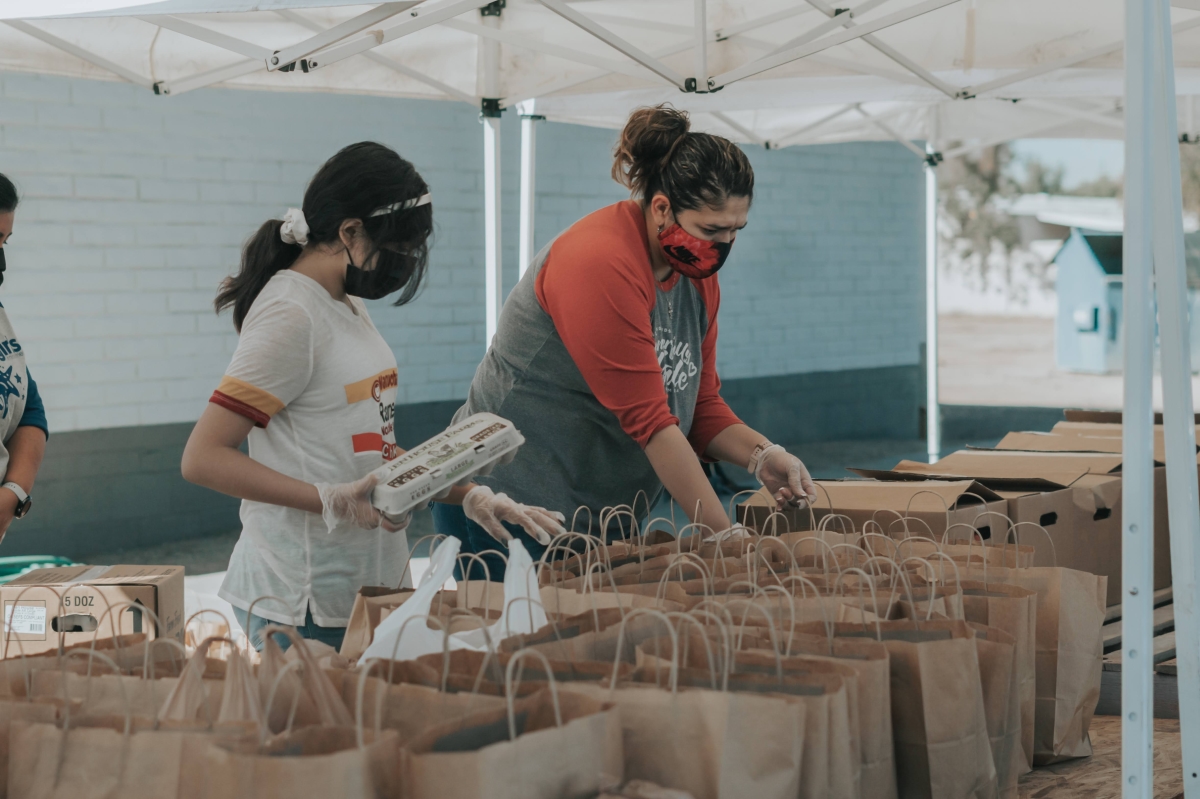
3. Fall Cleaning and Donation Drive
Spring cleaning is a whole lot easier when it’s preceded by a fall purge. This is the perfect time of year to take a look around and decide what you don’t need and what other people might put to better use.
For children, this can mean going through their rooms to find the toys that sit idly on shelves. One of two things will happen. Either your children will decide to donate gently used toys, or they’ll start playing with their old toys again. Either way it’s a win/win.
You can involve your child in the research to find a good organization to take your gently used items. This might look like foster care organizations or even families you know in need. If your child can see the impact, they will feel good about the donation. If you ask your child to give up a toy for a faceless organization, they’re not likely to willingly agree. If you ask that same child to give up a toy, and show them pictures of children in need who would benefit, they will be much more willing to share.

4. Thank You Cards
This is the perfect time of year to reflect on those people in your lives who make it better. Dr. Gatt recommends taking the time to truly sit with your child and reflect on the past year. Ask your child to name some of the people who have helped them.
Next, give your child the supplies to make thank you cards for 5-10 of those people who make the biggest impact on their lives. This could be everyone from grandparents to the mailman who just delivered the latest toy catalog. The idea is to get children thinking about people who give of themselves to make their lives better. Some possible recipients might be grandparents, teachers, parents, law enforcement officers, or people at restaurants or stores your child frequents.
Finally, help your child write personalized notes on the homemade thank you cards. These notes can follow an easy formula. Dear (person who helps you), Thank you for (thing that person does to help you). Your kindness makes me feel (feeling). I appreciate you. Sincerely, (Child).
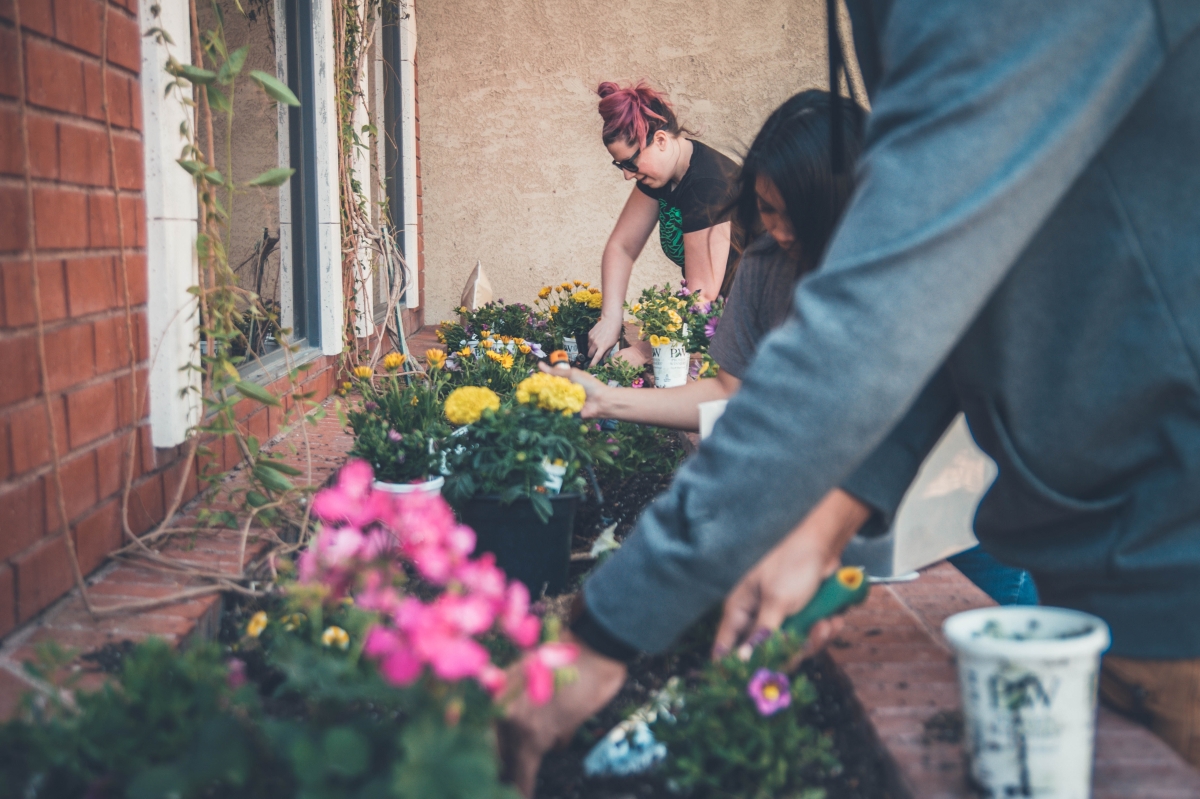
5. Helping Neighbors
Most of us live in communities with neighbors who could use a helping hand. Ask your child to think about your neighbors and the ones who could use a little more support this season. Here are some suggestions.
Elderly neighbors: Shovel walkways, rake leaves, bring in trash bins, play cards, or ask if you can help walk pets. Sometimes elderly neighbors might be missing their kids and families this time of year, and they just appreciate the company.
Families: Families are always busy during the holidays. If your child is old enough, they could offer to babysit or be a mother’s helper one night so mom can get some holiday work done.
Singles/Couples: Busy singles or couples without kids might just enjoy a homemade plate of cookies or loaf of pumpkin bread. Bonus – you’ll be able to spend some fun time with your child baking.
6. Give Mom & Dad the Day Off
Often kids are not as grateful to their parents as they should be. If we as adults had someone around cooking our meals, doing our laundry, and standing at the ready to help with our work, we would be very thankful.
The reality is, kids don’t know anything different. They might not appreciate us, because they just don’t know how hard it is to do our jobs. Here is a fun way to help them realize how much their parents do for them, and encourage them to give back.
Get notecards and write down 10 jobs mom and/or dad do in the house that the kids could reasonably do themselves. These cards might look very different depending on the ages of the children.
Next, pick one weekend day where the kids do the things mom and dad usually do. Dishes, sweeping, vacuuming, meals, laundry, bathrooms, and anything else they can reasonably do. If you wanted to be realistic, you could also complain about how you don’t like the food, and you need your favorite shorts but they haven’t been washed yet.
You and the kids might be surprised at just how much they can do themselves, and keep up the tradition once or twice a month. At the very least, hopefully your children will appreciate you more once they’ve walked a day in your shoes.
Often kids are not as grateful to their parents as they should be. If we as adults had someone around cooking our meals, doing our laundry, and standing at the ready to help with our work, we would be very thankful.
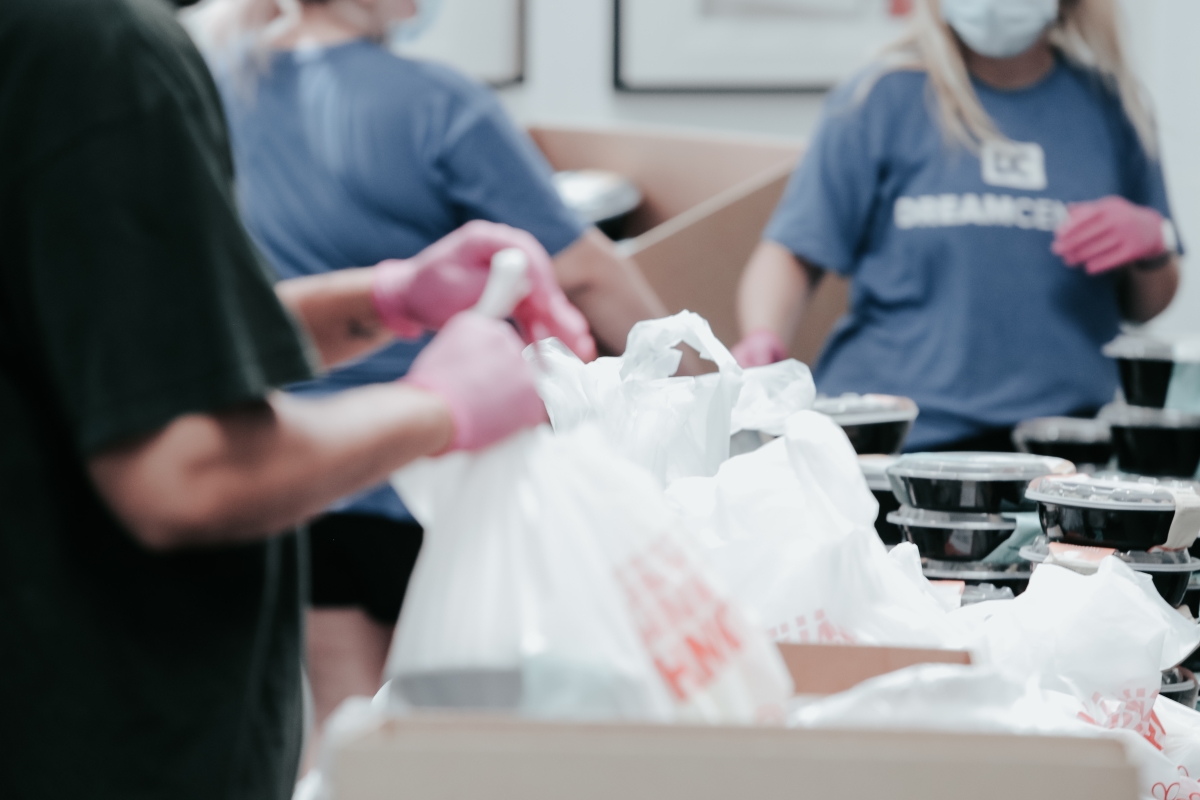
7. Kits for the Homeless
Perspective is an important thing for kids to understand. They always seem to have a good grasp on it when they’re on what feels like the losing end. If their sibling gets to do something they don’t or if a friend has something they don’t, they can be quick on the draw with the “it’s not fair!”
But of course there are two sides to perspective, and the evidence is all around us every day. This is an ideal time of year to think about those in need and provide them with some much needed kindness and support.
Dr. Gatt recommends taking an afternoon to make kits for the homeless that you can keep in your car and hand out when you see someone in need. Then the next time you’re driving, take the time to look around and find people in need.
These kits can include: water bottle, a protein rich snack, tissues, personal hygiene items, an emergency poncho if you live somewhere it rains, gloves or a hat, hand warmers, sunscreen, a card with local resources, and a note of encouragement.
These kits will be good to have when you encounter panhandlers, and teach kindness and gratitude to your children.
8. Kindness Calendar
During the holiday season, the focus for kids can very much be on themselves, Christmas lists, and Santa. The anticipation around Christmas can become very intense for children. For many, it is their favorite day of the year.
This anticipation and excitement is such a core part of childhood. However, if it comes without any real preparation it might fly by too quickly or lose its meaning.
We have created a 25 Days Kindness Calendar for Kids. Each day has a new act of kindness kids can easily check off. From simple compliments, to holding doors, to small homemade gifts, this calendar will help turn the anticipation into an exercise of kindness.
If your child completes the calendar, when Christmas comes it will be that much more special. Not only will they be happy because Santa came, but they will feel good about what they accomplished in December.

9. Gratitude Journals
Gratitude Journals are an excellent way to document all those little blessings in our lives which we might not notice. They can be especially impactful for children. Dr. Gatt recommends asking your children to keep by their bed and writing something each night.
They sell actual gratitude journals, but you truly just need a little notebook for each member of the family. The importance is not in how it looks, it is in how it makes children reflect.
At the end of the day, children of all ages can journal things in their lives that they care thankful for. This might range from the simple (french fries) to the more thoughtful (love and family connections). Encourage your children to think of specific acts of kindness they experienced during the day. These things will make them feel loved, and give them ideas for how they can spread kindness themselves.
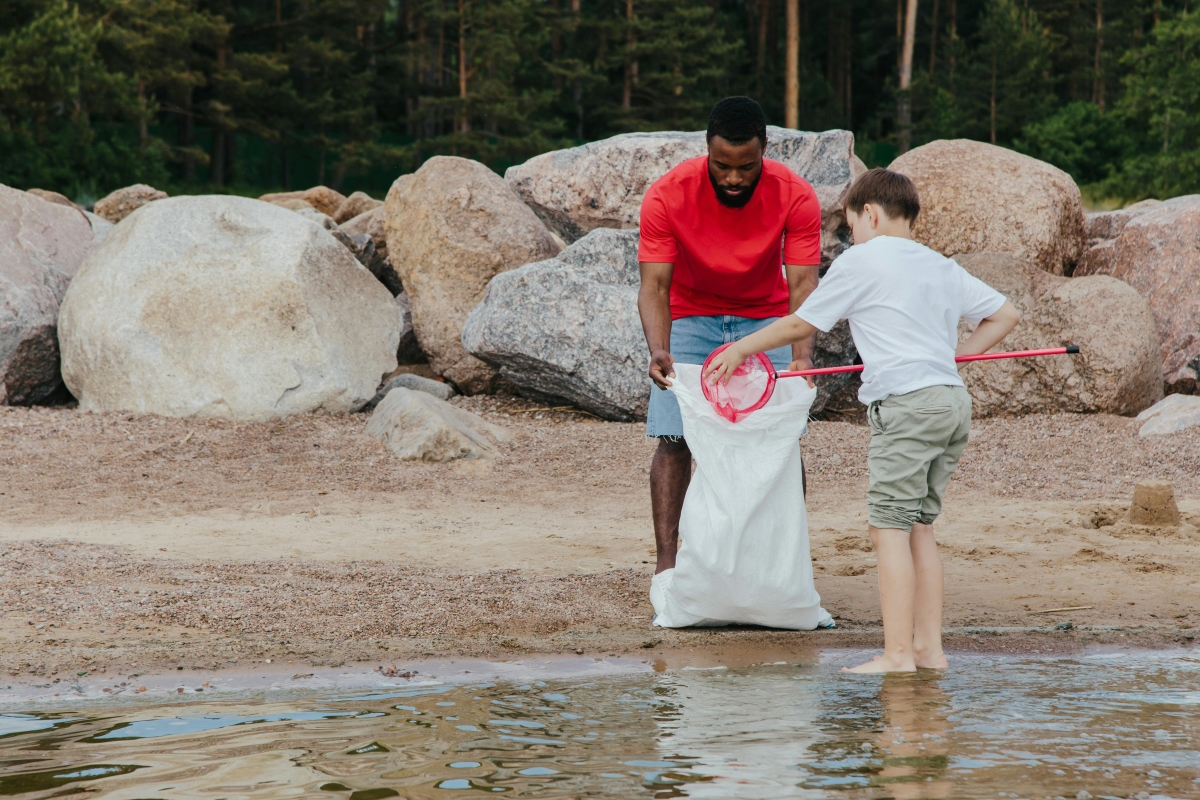
10. Volunteer Together
There are so many opportunities in all communities for families to volunteer together to help those in need. Dr. Gatt stresses that volunteering together has benefits beyond what might initially meet the eye. When parents and children volunteer together, they cement a culture of kindness and compassion into their family.
As parents, we are often so busy with our families, our jobs, and our communities that it is hard to find time to volunteer outside the home. Our kids know how valuable our time can be, so if we give it to an organization they will notice.
Volunteering together also is a gift of time together as a family. You can think of it less as volunteering, and more as a family team building activity. It will teach kids to work together, and take direction from the grown-ups running the operation.
Here is a list of volunteer organizations who always need volunteers.
- Local Animal Shelters often welcome young volunteers to play with animals and clean cages.
- Food Banks and Pantries often allow families to volunteer together to help sort, pack and restock food.
- Libraries usually have reading programs where kids can volunteer to read to children younger than them.
- Nursing Homes and Assisted Living Facilities benefit greatly from the joy children bring into a home. Kids can play games and participate in organized activities.
- Clean-Up Groups at parks and other shared spaces never turn down little hands that are good at spotting and collecting garbage.
- Community Gardens sometimes allow children to participate in planting, weeding and harvesting.
- Schools frequently provide families with volunteer activities such as cleaning-up spaces or organizing classrooms.
- Church or Community Organizations always need lots of hands to help organize, clean, and do outreach.
- Hospitals often welcome cards, flowers, stuffed animals and well wishes for patients.
- Home volunteer projects are always an option for families who don’t feel comfortable taking their children to one of these organizations. Simply pick a charity and organize a group activity with family and friends to help. This is a perfect opportunity to institute a group activity making kits for the homeless in the community.
All parents want to raise generous, kind, grateful children. Children naturally have these tendencies, because acts of kindness and generosity make them feel good inside. Encouraging this side of kids is so important to their mental health and wellbeing.
The holidays can be an excellent time to start traditions. Whatever you decide to do, try to make it a habit all year long. Making acts of service and gratitude a year-round practice helps instill a culture of giving and kindness within your family. It will become a part of your family values rather than a seasonal obligation. Your children will grow in empathy, compassion, and happiness and your home will benefit as much as your community.
